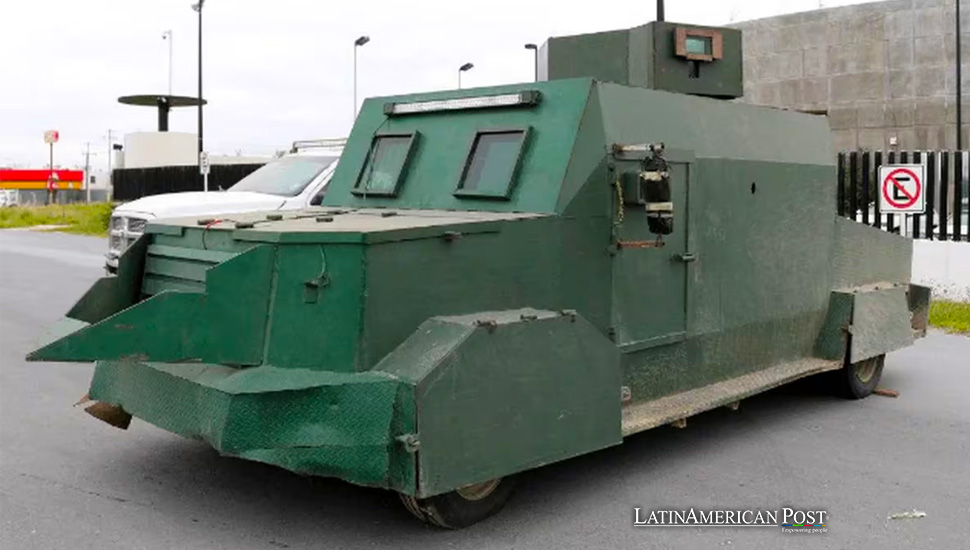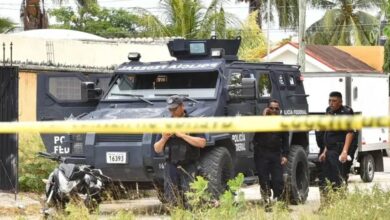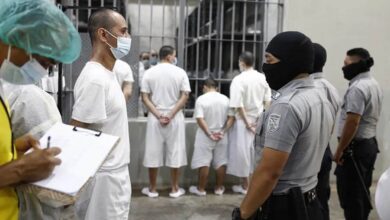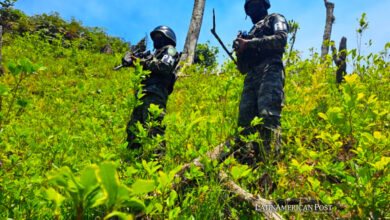Cartel Monster Trucks and Mexico’s Battle Against Armored Warfare

The strategic deployment of heavily armored “monster trucks” by Mexican cartels has intensified their violent clashes. These formidable vehicles, equipped with homemade armor and gun turrets, symbolize both the might and the ruthlessness of criminal organizations. The recent destruction of 50 such trucks by Mexican officials, a significant milestone in the ongoing battle against these cartels, underscores the government’s relentless efforts to combat cartel violence.
The strategic use of “monster trucks” by Mexican cartels has become a significant aspect of their operations, representing both a practical tool in combat and a potent symbol of power. These vehicles, often called “Frankenstein trucks” due to their extensive modifications, are outfitted with armored plates, gun turrets, and other enhancements designed to withstand intense gun battles. Recently, officials in Mexico took a strong stand against these intimidating machines by destroying 50 seized monster trucks, an act highlighting the government’s ongoing efforts to combat cartel violence.
Monster trucks first gained prominence within cartel arsenals around 2010. These vehicles are typically modified with bulletproof panels and reinforced turrets for machine guns, making them formidable in confrontations. They often feature additional offensive modifications like battering rams, which enable them to breach barriers during assaults. The Gulf Cartel and the Jalisco New Generation Cartel (CJNG) are mainly known for utilizing these trucks. The sophistication of their modifications has grown over the years, reflecting advancements in defensive and offensive capabilities.
These heavily armored trucks are not just used for transportation; they are strategically used in cartel operations. Their intimidating presence is intended to instill fear in rival groups and local populations. Furthermore, their robust construction allows them to engage in prolonged gun battles with law enforcement and rival factions. The deployment of these vehicles is a clear demonstration of a cartel’s military-like organization and firepower, designed to assert dominance and control over territories.
The Symbolic Power of Monster Trucks
Beyond their practical applications, monster trucks hold significant symbolic value for cartels. They represent the evolution of cartels from mere criminal gangs to heavily armed militant groups. The presence of these vehicles in cartel convoys serves as a psychological weapon, projecting an image of invincibility and control. This symbolism is not lost on the local populations and rival groups, who often view these trucks as a sign of the cartel’s unchallenged power and reach.
In the context of Latin American culture, where symbols of power and resilience carry deep meaning, cartels’ use of monster trucks can be seen as a modern-day adaptation of historical displays of strength. Just as ancient warriors adorned themselves with the fiercest armor, cartels today use these trucks to showcase their might. This cultural aspect is crucial in understanding why these vehicles have become integral to cartel strategy and identity.
Government Crackdown and Future Implications
The recent destruction of 50 monster trucks by the Mexican Federal Prosecutor’s Office is a significant move in the ongoing battle against cartel violence. These trucks were seized in Tamaulipas, a state bordering Texas, known for its strategic importance in drug trafficking routes. The destruction operation involved heavy machinery, with cranes toppling the trucks before they were crushed. This act was part of the “Destination of Assets and Objects of Crime Program,” aimed at eliminating the tools of cartel warfare.
The prosecutor’s office released footage that showed some trucks painted in camouflage colors while others bore distinct cartel markings. These visual details underscore the degree of customization and investment cartels place in these vehicles. By dismantling these trucks, the government aims to send a clear message to criminal organizations about its commitment to dismantling their operational capabilities.
However, the destruction of these trucks also raises questions about the future of cartel tactics. Cartels may seek alternative methods to maintain their operational edge with their current arsenal being reduced. This could lead to an escalation in arms smuggling or the development of new types of vehicles and weaponry. The government’s crackdown, while necessary, may provoke a strategic shift within cartel operations, potentially leading to more innovative and dangerous tactics.
The Regional Impact and Broader Implications
Monster trucks’ use and subsequent destruction have broader implications for Latin America. Such heavily armed vehicles highlight the extent to which criminal organizations are willing to go to secure their interests. This trend is not limited to Mexico; other countries in the region, facing similar challenges with drug trafficking and organized crime, may also encounter the rise of such militarized tactics.
In countries like Colombia and Brazil, where drug cartels and gangs wield significant power, the strategic use of heavily armed vehicles could become a more prevalent issue. Governments in these regions must remain vigilant and proactive in addressing the potential spread of such tactics. The importance of international cooperation and intelligence sharing cannot be overstated in curbing the influence and reach of these criminal organizations. It is crucial for restoring regional peace and stability.
Furthermore, the cultural implications of these vehicles must be addressed. In many Latin American countries, symbols of power and resistance are deeply ingrained in the social fabric. The monster trucks used by cartels represent a modern-day adaptation of these symbols, reflecting the ongoing struggle between state authorities and criminal organizations. Understanding this cultural context is not just important, it is essential for developing effective strategies to combat cartel influence and restore regional peace and stability.
The strategic deployment of monster trucks by Mexican cartels underscores the evolving nature of organized crime in Latin America. With their formidable modifications and symbolic power, these vehicles represent a significant challenge for law enforcement agencies. However, the recent destruction of 50 such trucks by Mexican officials is a testament to the resilience and adaptability of these agencies. It is a step towards dismantling these criminal organizations’ operational capabilities and a reassurance of the continuous vigilance and adaptation in the fight against cartel violence.
Also read: The Rise and Fall of Mexico’s First State-Run Morphine Dispensary
As cartels seek new ways to maintain their dominance, governments in the region must remain proactive in developing strategies to counter their tactics. This includes physical interventions and addressing the cultural and social dynamics that fuel cartel influence. By understanding the multifaceted nature of this issue, authorities can work towards creating a safer and more secure environment for all citizens in Latin America.





